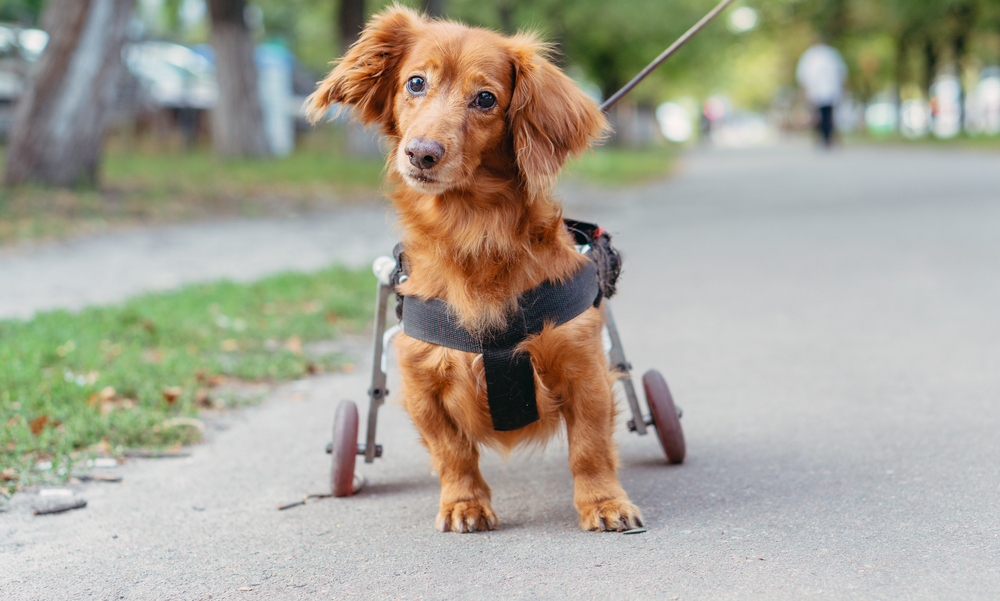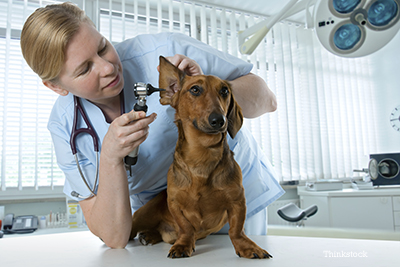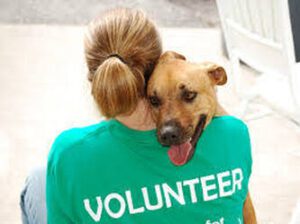When we talk about physically disabled rescue pets, we’re discussing brave little fighters who, against all odds, continue to inspire us every day. These special companions may have mobility, vision, or hearing impairments, but with the right support, they can lead full and joyful lives. This guide is dedicated to the caretakers of such pets, offering insights into specialized equipment that can transform the lives of these animals.
Key Takeaways
-
Mobility aids like wheelchairs can help pets with paralysis or limb loss regain independence.
-
Tools for vision and hearing-impaired pets enhance their ability to interact with the world.
-
Physical therapy solutions, including exercises and therapies, are vital for strengthening muscles and improving mobility in paralyzed pets.
-
Special harnesses provide support for pets with mobility issues, making daily activities easier.
-
Tactile toys stimulate the senses and aid in cognitive development, crucial for pets with sensory disabilities.
Empower Your Pet: The World of Mobility Aids
For pets with disabilities, mobility aids are more than equipment; they’re a passport to freedom. These aids range from wheelchairs to support harnesses, each designed to cater to different needs. Whether it’s a dog who’s lost the use of its hind legs or a cat recovering from surgery, mobility aids can help pets explore, play, and engage with their families.

“Caring for Specially-Abled Pets …” from palisadesvet.com and used with no modifications.
Breaking Down Mobility Barriers
Imagine a dog who loves to chase after balls but can’t move as swiftly due to an injury. Mobility aids come into play here, breaking down the barriers that keep our furry friends from living their best lives. But it’s not just about providing equipment; it’s about understanding each pet’s unique needs and helping them adapt to their new reality.
Choosing the Right Aid
Choosing the right mobility aid is crucial. You’ll want to consider factors such as the type of disability, the pet’s size, and their lifestyle. A small, active dog may benefit from a lightweight, adjustable wheelchair, while a larger, less active dog might need a sturdier model. It’s all about finding the right fit—both physically and for your pet’s personality.
The Building Blocks of Freedom: Wheelchairs for Pets
Wheelchairs are a game-changer for many disabled pets. They provide support, stability, and a chance to move freely. But not all wheelchairs are created equal. The best ones are those that are tailored to fit each pet’s specific needs, taking into account their weight, size, and the nature of their disability.
The Mechanics of Pet Wheelchairs
So, how do these wheelchairs work? They’re designed to support a pet’s body while allowing them to use their remaining limbs to move. Most models have wheels, a frame, and a harness system. The wheels give mobility, the frame provides support, and the harness keeps the pet secure. It’s a simple concept with a profound impact.
Fitting and Customization Process
Getting the right fit is vital. A wheelchair that’s too large or too small can be uncomfortable and may even cause harm. That’s why customization is key. Many companies offer a step-by-step process to measure your pet and create a wheelchair that fits like a glove. This might include adjustable straps, various wheel sizes, and even different materials to suit your pet’s activity level.
Now, let’s talk about those pets who might not see or hear as well as others. Just like their able-bodied counterparts, pets with vision or hearing impairments can live full and happy lives with a little help from specialized tools.

“Hearing Aids for Dogs” from www.pethealthnetwork.com and used with no modifications.
Sensory Tools: Aiding Pets with Vision and Hearing Impairment
For those pets who navigate the world with limited sight or hearing, there are innovative tools designed to enhance their safety and interaction. From textured mats that signal different areas of the home to specialized toys that emit unique scents or sounds, these devices can drastically improve a pet’s ability to engage with their surroundings.
Adaptive Devices for Visually Impaired Companions
Visually impaired pets may not see the world, but they can feel and navigate it with our help. Adaptive devices like halo harnesses protect them from bumping into objects, while scent markers can help them find their food bowls or litter boxes. These tools empower pets to map their environment in a way that’s safe and comfortable for them.
Engagement and Communication Tools for Hearing Impaired Pets
Hearing impairments don’t have to silence the communication between you and your pet. Vibration collars can be used to get their attention, and hand signals can become a new language for commands and affection. It’s all about creating a dialogue that works for both of you.
Moreover, these tools aren’t just functional; they’re also about enrichment. They allow pets to continue playing, exploring, and enjoying life, which is essential for their mental health and overall well-being.
Physical Therapy Solutions: Re-imagining Movement for Paralyzed Pets
Physical therapy is a beacon of hope for pets with paralysis. With the right exercises and therapies, pets can regain strength, improve circulation, and sometimes even recover some mobility. It’s a process that requires patience and dedication, but the rewards can be life-changing.
Innovative Therapies to Strengthen Muscles
Therapies like hydrotherapy and acupuncture have been shown to help paralyzed pets gain strength and mobility. The buoyancy of water reduces stress on joints during hydrotherapy, while acupuncture can alleviate pain and promote healing. These therapies, when combined with a veterinarian’s expertise, can pave the way for significant improvements.
But therapy doesn’t stop at the clinic. At-home exercises tailored to your pet’s specific needs can continue the work of strengthening muscles and maintaining flexibility. This could include gentle stretches, massage techniques, or balance exercises, all designed to support your pet’s rehabilitation journey.
-
Hydrotherapy sessions can often be found at specialized veterinary clinics or pet rehabilitation centers.
-
Acupuncture should always be performed by a certified professional with experience in treating pets.
-
At-home exercises should be done consistently and with guidance from your pet’s rehabilitation specialist.
Remember, the goal of physical therapy is not just to improve physical capabilities but also to enhance overall quality of life. Therefore, it’s important to celebrate every small victory along the way.
Home Exercises to Support Rehabilitation
Home exercises are a cornerstone of any rehabilitation plan. Simple activities like encouraging your pet to stand and balance for treats, or using ramps for gentle incline walking, can make a big difference. It’s about creating a supportive environment where your pet can build strength and confidence at their own pace.
Support Where It’s Needed: Special Harnesses Explained
Special harnesses are another tool in our arsenal to assist disabled pets. These harnesses are designed to provide support where it’s needed most, whether that’s helping a pet with weak hind legs stand and walk or assisting with lifting a larger pet with mobility issues.
Types of Harnesses and Their Purposes
There are several types of harnesses available, each serving a different purpose. A lifting harness can help you support your pet’s weight as they move, while a rehabilitation harness might have attachments for use in physical therapy sessions. There’s even the full-body harness for pets who need complete support.
Ensuring a Comfortable Fit
Ensuring a comfortable fit is essential when it comes to harnesses. A poorly fitting harness can lead to discomfort or even injury. That’s why it’s important to measure your pet accurately and choose a harness that’s adjustable in the right places. A good fit means a happier pet and a more effective tool in their rehabilitation.
When selecting a harness, look for one that is made from durable, washable materials and has a design that evenly distributes your pet’s weight to avoid pressure points. Comfort and practicality should go hand-in-hand. For pets with mobility issues, consider exploring animal wheelchairs to provide them with the support they need.
Engaging the Senses: Tactile Toys for Enrichment
Finally, let’s not forget about the power of play. Tactile toys are not just toys; they’re essential tools for sensory enrichment, especially for pets with disabilities. These toys can stimulate the senses, promote problem-solving skills, and provide much-needed mental stimulation.
Interactive Playtime Essentials
Interactive toys that encourage pets to use their sense of touch, smell, or even the limited sight they might have, can lead to hours of fun. From puzzle feeders that challenge them to think to textured balls that are easy to grab, these toys make playtime both fun and beneficial.
Tactile Toys’ Role in Cognitive Development
For pets with disabilities, tactile toys play a critical role in cognitive development. They help keep the mind sharp and can even slow the progression of degenerative diseases. By providing a variety of textures, movements, and challenges, we can help our pets stay engaged and curious about the world around them.
Specialized Equipment for Physically Disabled Rescue Pets: Mobility Aids, Vision and Hearing Impaired Pet Tools, Physical Therapy Solutions for Paralyzed Pets, Wheelchairs, Special Harnesses, Tactile Toys
For pets with disabilities, tactile toys play a critical role in cognitive development. They help keep the mind sharp and can even slow the progression of degenerative diseases. By providing a variety of textures, movements, and challenges, we can help our pets stay engaged and curious about the world around them.
For instance, a toy that requires a pet to navigate different textures can stimulate brain activity and improve their tactile perception. It’s like a fun puzzle that keeps their minds active and their senses sharp.
FAQs
As a caretaker of a special needs pet, you may have questions about how to best support your companion. Let’s address some common queries to help you make informed decisions.
How do I know if my pet needs a mobility aid?
If your pet struggles with walking, standing, or seems less active due to a physical disability, a mobility aid might be beneficial. Look for signs like dragging hind legs, difficulty rising, or reluctance to engage in activities they once enjoyed. Consult with your veterinarian to determine the best course of action.
Most importantly, observe your pet’s behavior and quality of life. A mobility aid can often restore a sense of independence and joy for pets facing physical challenges.
Can pets with vision impairments still interact with toys?
Absolutely. Toys for visually impaired pets often rely on other senses like smell, sound, and touch. Scented toys or those that make noise when moved can provide hours of engagement. Textured toys are also excellent as they allow pets to explore different sensations.
Because these toys cater to their intact senses, they can help your pet compensate for their vision loss and continue to enjoy playtime.
What are the benefits of a specialized harness?
A specialized harness offers support to pets with mobility issues, allowing them to move more easily and safely. It can help with lifting and carrying, reduce the risk of injury, and provide stability. Besides that, it can also assist in rehabilitation exercises and improve the quality of life for both pet and owner.
Therefore, investing in a good-quality harness is an act of love and support for your furry friend.
Are tactile toys beneficial for all pets or only those with disabilities?
Tactile toys are beneficial for all pets, not just those with disabilities. They stimulate the senses, encourage natural behaviors like hunting and foraging, and can reduce stress and boredom. For pets with disabilities, these toys are particularly important as they help to compensate for their limitations.
Remember, a stimulated pet is a happy pet, regardless of their physical capabilities.
What should I consider when choosing physical therapy solutions for my paralyzed pet?
When choosing physical therapy solutions for your paralyzed pet, consider the following:
-
The specific needs of your pet based on their condition and what the therapy aims to achieve.
-
The qualifications and experience of the therapist or rehabilitation specialist.
-
The type of therapy available, such as hydrotherapy or therapeutic exercises, and its suitability for your pet.
-
The frequency and duration of therapy sessions needed to see improvement.
-
Your ability to continue exercises or treatments at home to support the therapy.
It’s essential to work closely with your veterinarian or a pet rehabilitation specialist to tailor a program that’s right for your pet. Together, you can help your pet regain as much mobility and independence as possible.
In conclusion, physically disabled rescue pets can lead a fulfilling life with the help of specialized equipment and the loving support of their caretakers. Mobility aids, sensory tools, and physical therapy solutions offer these pets a chance to enjoy life to the fullest. By understanding the options available and how to use them, you can make a significant difference in the life of your special needs pet.


